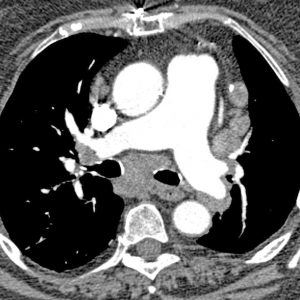In patients with pulmonary arterial hypertension (PAH) receiving background therapy, treatment with sotatercept led to significant reductions in pulmonary vascular resistance (PVR), according to study results published in the New England Journal of Medicine.
Researchers randomly assigned 106 patients with PAH (mean age, 48.3±14.3 years) who were receiving stable background therapy to either 0.3 mg/kg (n=32) or 0.7 mg/kg (n=42) subcutaneous sotatercept every 3 weeks or placebo (n=32) in the PULSAR clinical trial (PULSAR; ClinicalTrials.gov Identifier: NCT03496207). The primary endpoint, assessed at 24 weeks, was the change from in PVR from baseline.

Background therapy among the study participants included monotherapy, double therapy, or triple therapy with combinations of phosphodiesterase-5 inhibitors, endothelin-receptor antagonists, prostacyclin analogues, soluble guanylate cyclase stimulators, or prostacyclin-receptor agonists.
Participants who took 0.3 mg/kg sotatercept had a significantly greater change from baseline in PVR compared with those who took placebo. Treatment with 0.7 mg/kg sotatercept was also associated with a significantly greater change in PVR from baseline to 24 weeks.
The least-squares mean difference between the sotatercept 0.3-mg group and the placebo group at 24 weeks in the change in the 6-minute walk distance (6MWD) was 29.4 meters (95% CI, 3.8-55.0). Additionally, the least-squares mean difference between the 0.7 mg/kg sotatercept and placebo groups for the change in the 6MWD was 21.4 meters (95% CI, -2.8 to 45.7). Treatment with sotatercept was associated with a reduction in levels of N-terminal pro-B-type natriuretic peptide.
The most common hematologic adverse events reported in this study included thrombocytopenia and increased hemoglobin levels. During the study, 1 patient assigned to 0.7 mg/kg sotatercept died from cardiac arrest.
Limitations of this trial was the relatively small sample size as well as the short duration of follow-up. The investigators added that the study did not examine “the effects of sotatercept on clinical outcomes, including mortality, and this would be important to address in future trials.”
Reference
Humbert M, McLaughlin V, Gibbs JSR, et al; for the PULSAR Trial Investigators. Sotatercept for the treatment of pulmonary arterial hypertension. N Engl J Med. 2021;384(13):1204-1215. doi:10.1056/NEJMoa2024277
